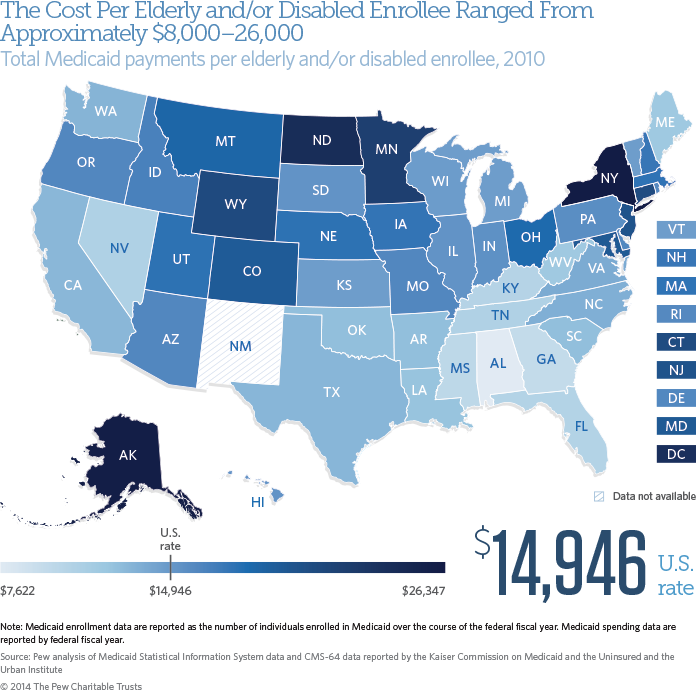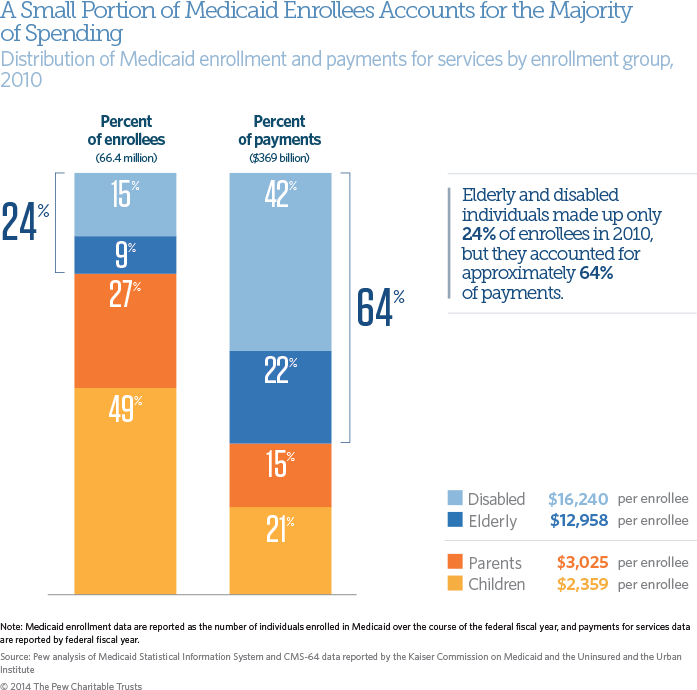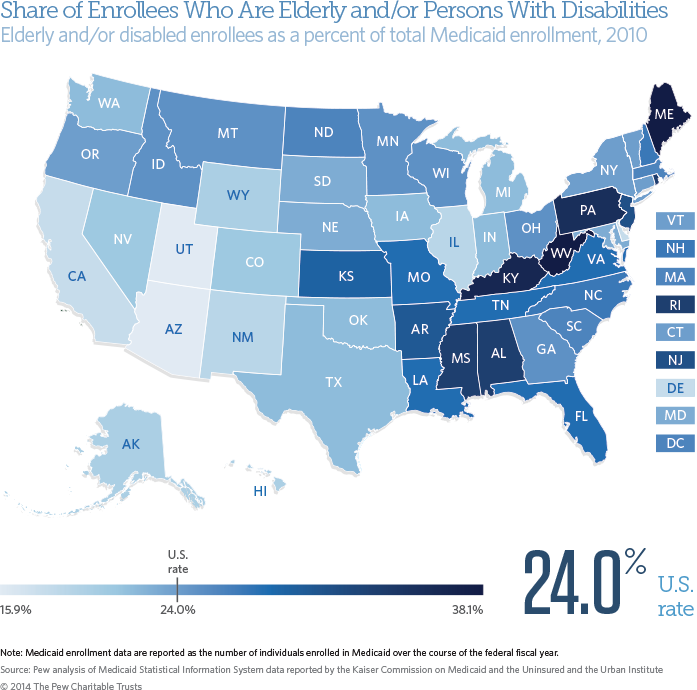
For state-by-state data please see the tables below.
Composition of Medicaid enrollees
In 2010, the average Medicaid expenditure per elderly and disabled enrollee was $14,946, ranging from nearly $8,000 in Alabama to nearly $27,000 in New York. In contrast, the average Medicaid expenditure per child and parent was much lower, ranging from $1,354 in California to $5,227 in Alaska. Factors that affect this variation include program eligibility and optional benefits, provider payment rates, pharmaceutical discounts, regional differences in the cost of providing health care and the health status and poverty rate of the population.32 Many of these factors influence variation across states in per-person spending for all insured individuals, regardless of the source of their health insurance coverage.33


